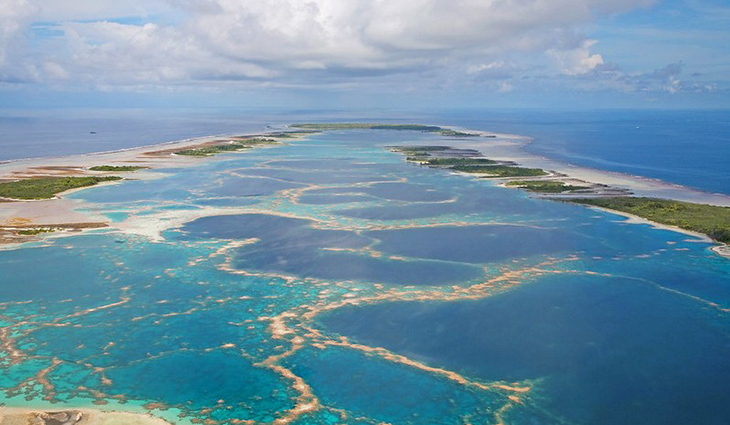
In one of the more remote areas in the Pacific Ocean, there is what is known as the Southern Line Islands that sit just south of the equator. These five tiny isles, called “the line” by sailors, are Malden, Starbuck, Vostok, Flint and Caroline, or Millennium to some.
Back in 2009, a group of explorers from National Geographic called the Pristine Seas Expedition chanced upon these islands, located around 2,400 kilometers (1491.29 miles) and 3,300 kilometers (2050.52 miles) just south of Hawaii, and were awed by their natural beauty. The waters were teeming with fish and coral reefs, almost feeling like they were left untouched by civilization and time.
Unfortunately, as amazing as they were, that all changed during the 2015 El Niño phenomenon which caused a record-warming water temperature increase of more than 2°C (3.6° F) above average in the eastern portion off the equator in the Pacific Ocean. Because of this, it caused massive amounts of coral reefs to die off in the area.
However, when the team returned in 2021, what they found was an unbelievable setting rich with colorful corals, a variety of fish and other sea life, some seen as far as 100 feet off the island slopes at that. Despite their data showing extreme numbers of coral deaths, since then, one of the team members noted that now, the coral population is now at an average of ‘43 million to 53 million coral colonies per square mile.’
According to one of the members of the Pristine Seas, marine biologist Enric Sala, when visiting the islands that belong to the Pacific island nation of Kiribati, he explained that it took longer to reach these islands by plan and boat than it took the astronauts of the Apollo missions to reach the moon.
As for their trip to Vostock, Flint and Millneniuem islands back in 2017, they found that all the gorgeous cauliflower reefs and corals known as pocilopora were actually gone. Moreover, the acropora species was yet another that was also highly damaged. However, some of the other types of coral species managed to make it without as much destruction, which made Sala hopeful that they would be able to recover faster as well.
And to their delight, because many of the dead corals were covered in “crustose coralline algae” rather than seaweed, it meant that coral larvae could latch onto the marine plants in order to build new reefs. Because of this, there was what they referred to as a “near-total regeneration” of the coral reefs around these Southern Line Islands, restoring life back to the way they knew it, if not even better than before.
According to Sala, “The reef was covered by light-blue corals that looked like giant roses—a garden of Montipora aequituberculata stretching as far as I could see.”
Considering just how remote these Southern Line Islands are, no one was really sure about how well they were doing or if they were managing to regenerate to their original beauty or possibly, become even more beautiful than before. However, Sala explains that he had an idea since many of the montipora were around the same size. This meant that it was possible that there was either one or two huge coral spawning events which allowed the corals to not only reproduce and launch their eggs to sea before they get pushed down on the reef, but that it was enough to almost completely repopulate these massive areas of dead corals, bringing them back to life.
Because of this, the team and crew members have given it the nickname “super reef,” which honestly, it truly deserves.
Sala wrote in an article for National Geographic, “The corals that were resistant to the phenomenal 2015-16 El Niño provided the reefs’ resilience. The Southern Line Islands lie in one of the hottest hot spots of warming in the Pacific Ocean, so the corals apparently have adapted to heat.”
Moreover, Sala also shares that he believes the reason why there was a major influx of the crustose coralline algae that worked like building blocks on the dead corals for new ones to grow – rather than the usual seaweed – was because of the amount of marine life like parrotfish, surgeonfish, zebrafish, and other types that ate up all the seaweed before it could cover the corals.
In addition, Kiribati’s government has also confirmed that their oceans will not be open for large-scale commercial fishing, creating the Southern Line Islands Marine Protected Area (SLIMPA) to protect the corals moving forward.
What are your thoughts? Please comment below and share this news!
True Activist / Report a typo


